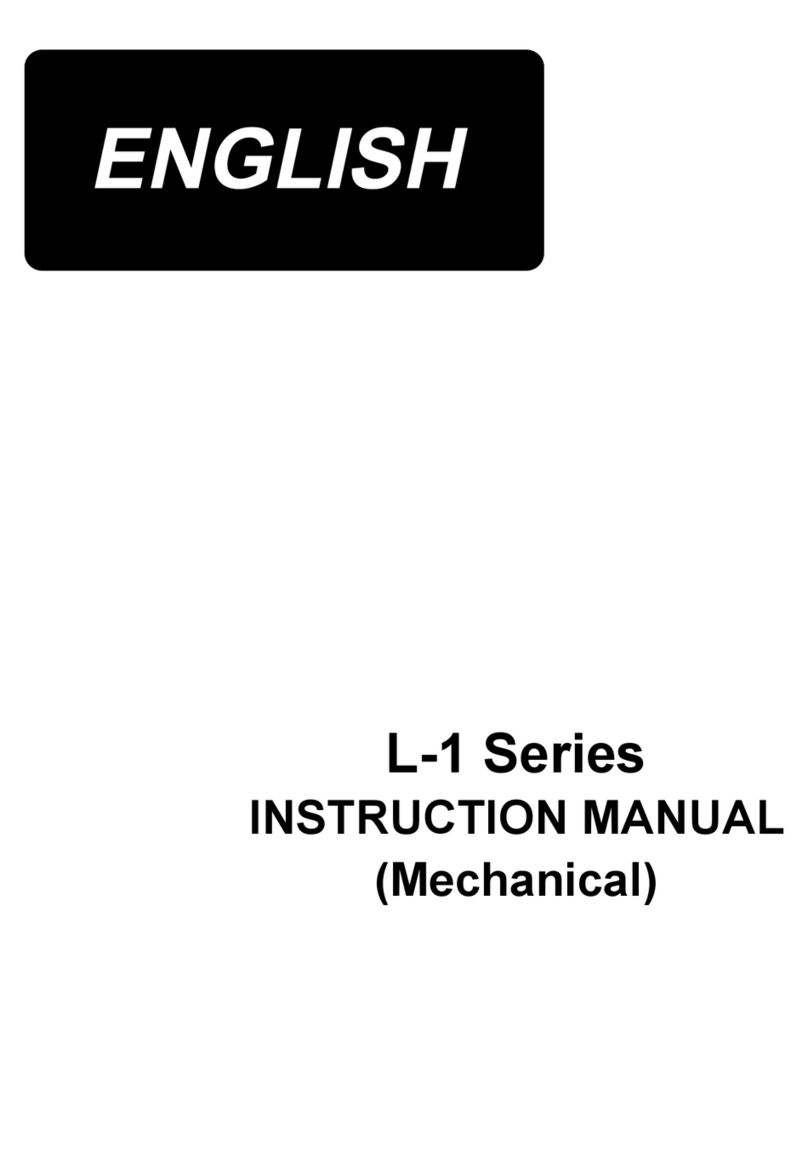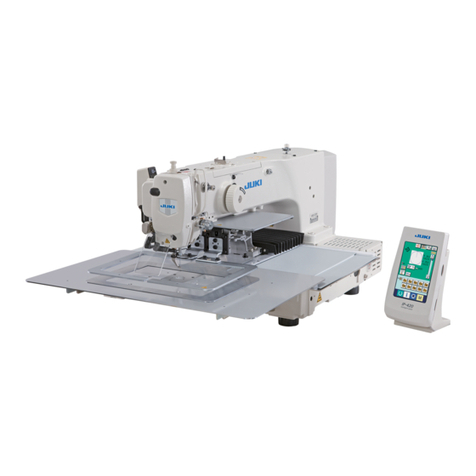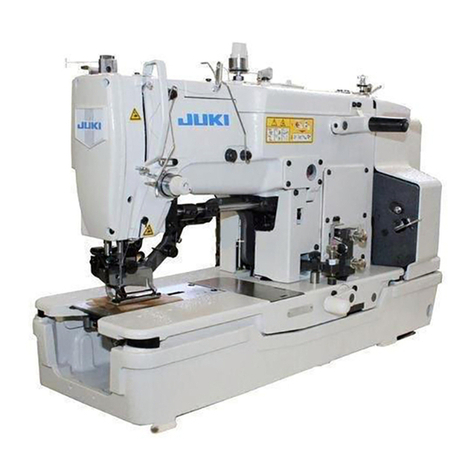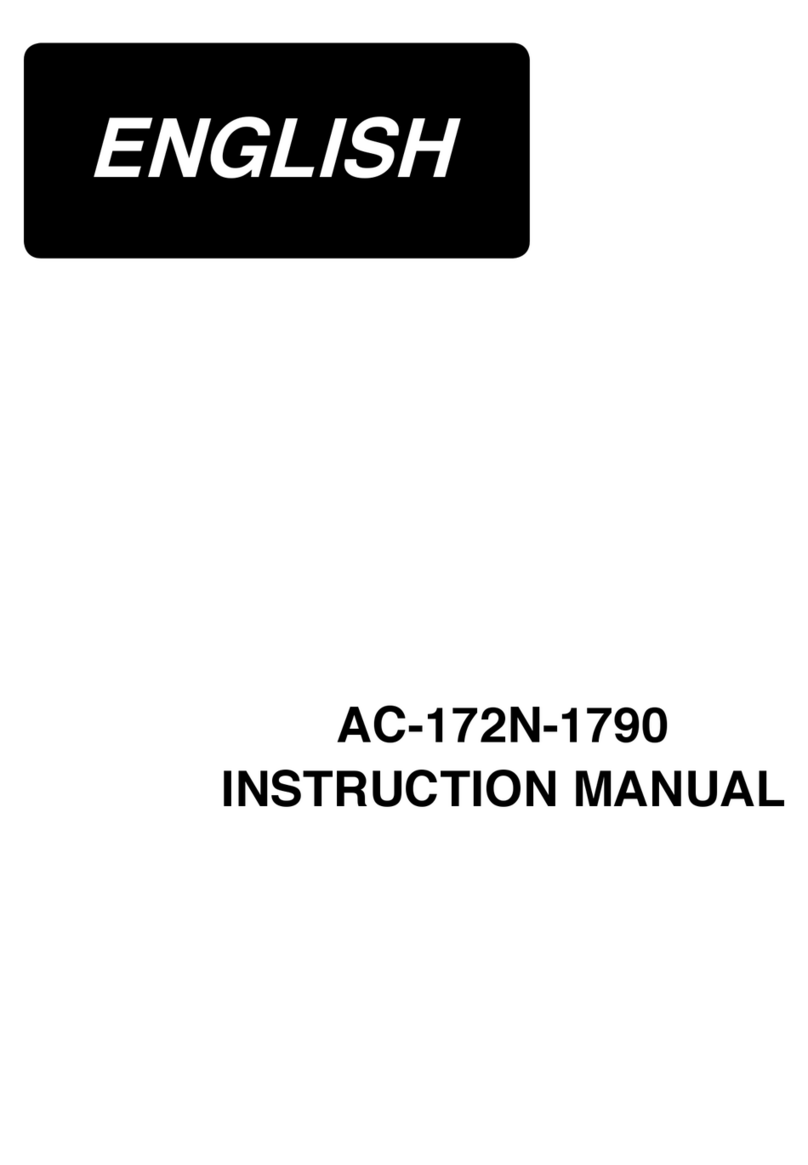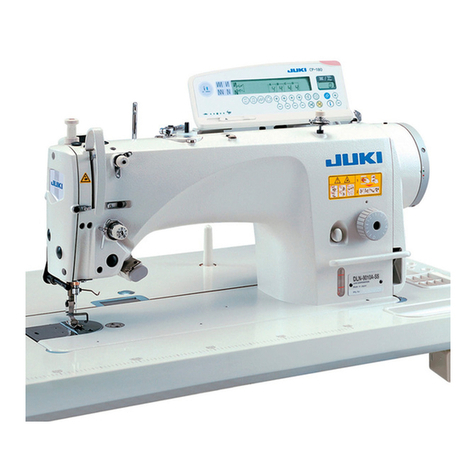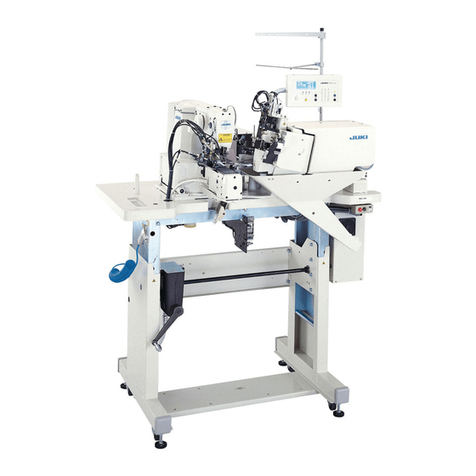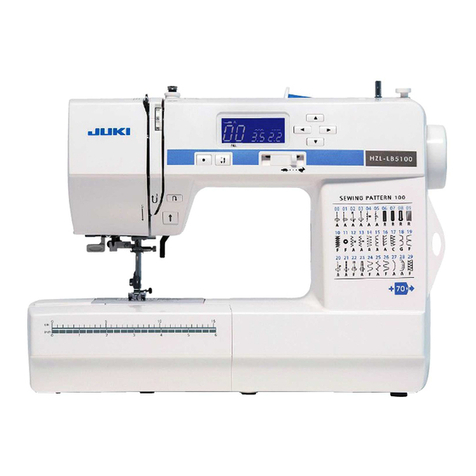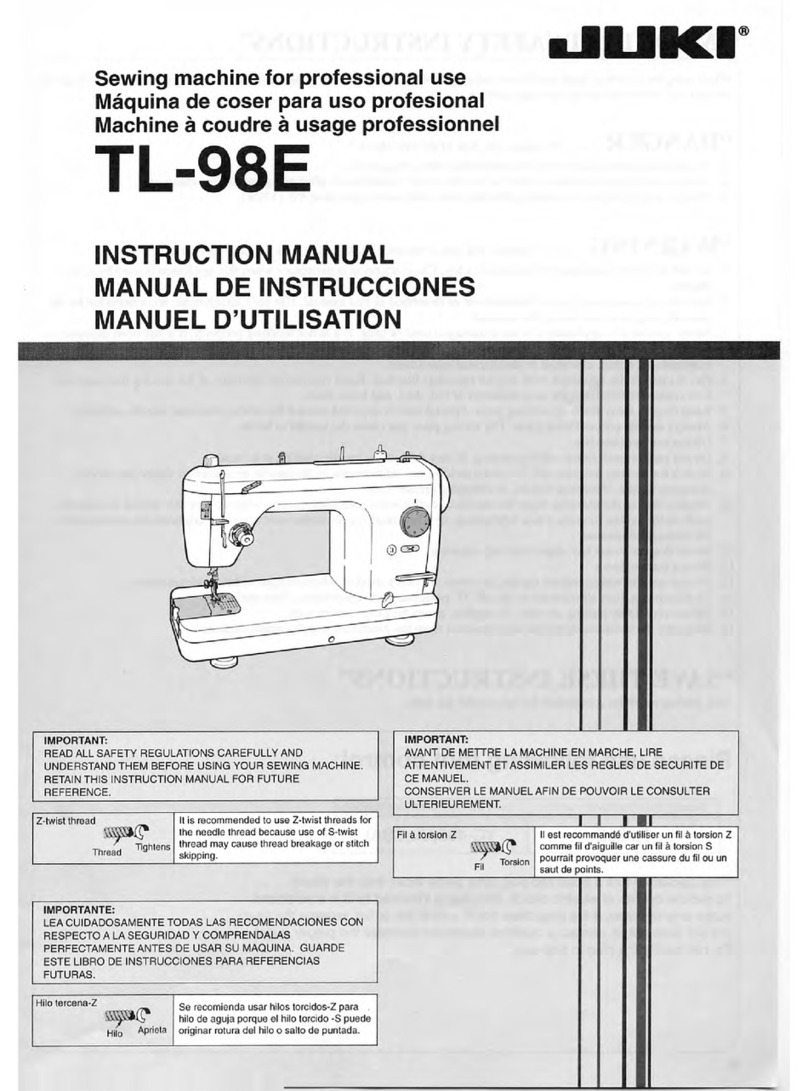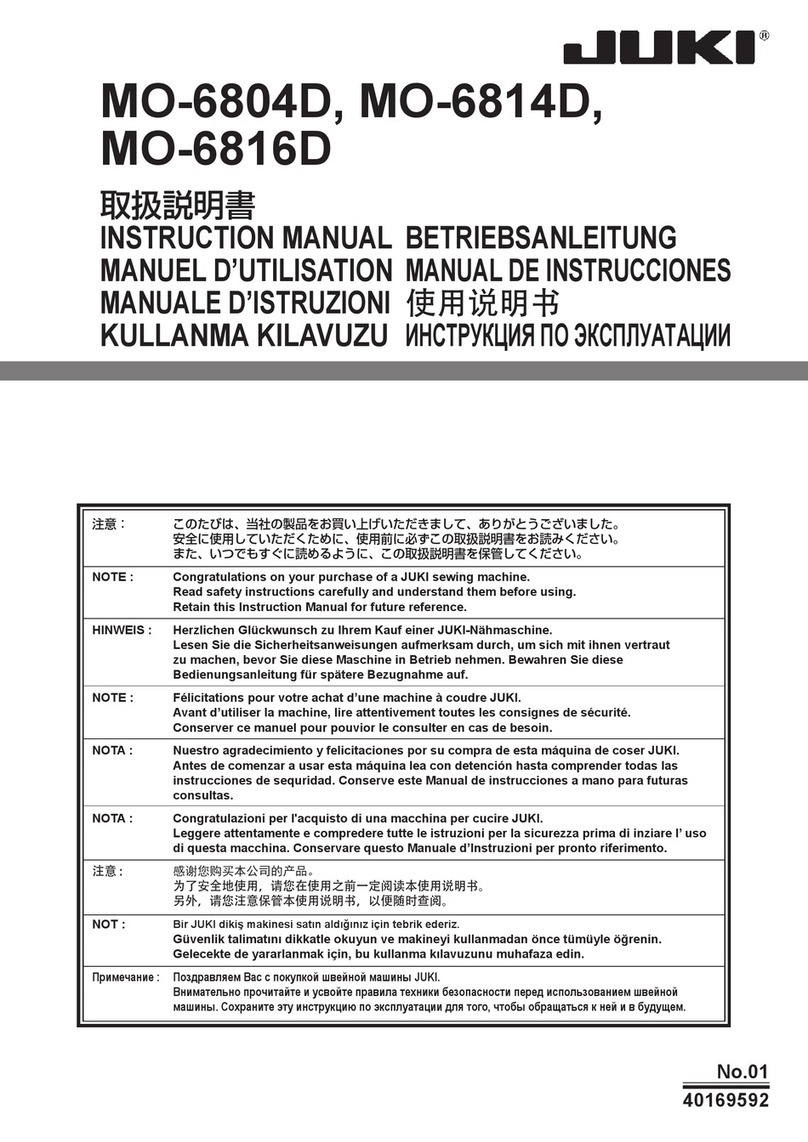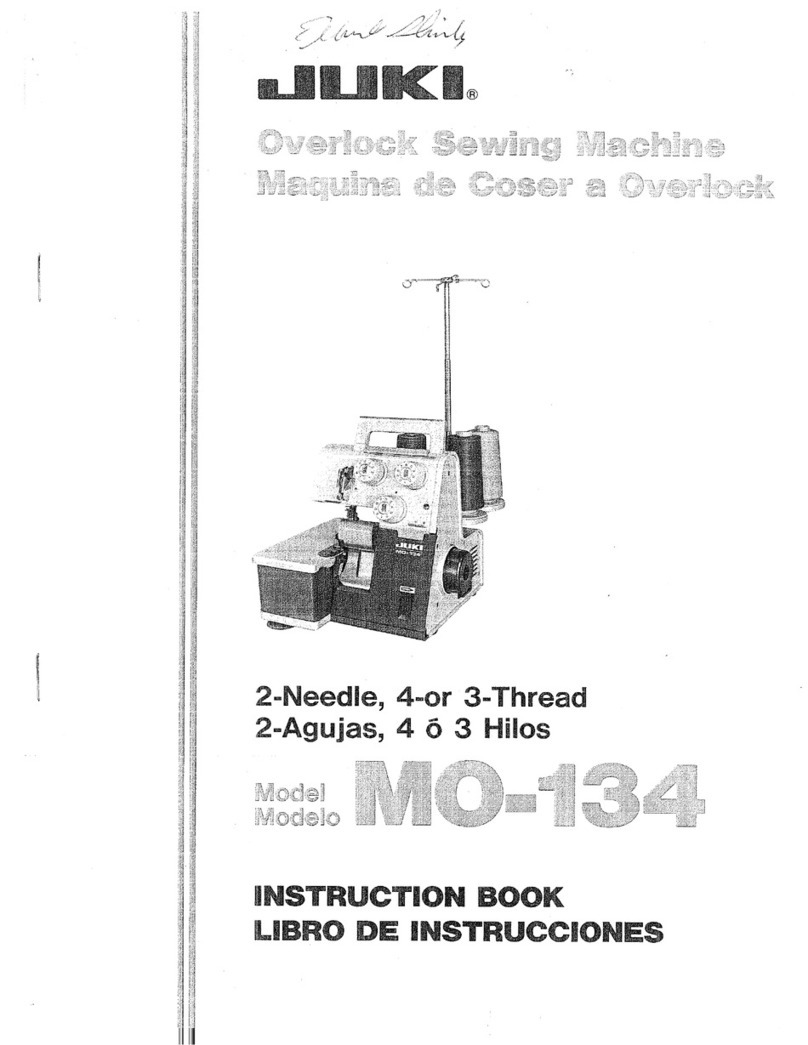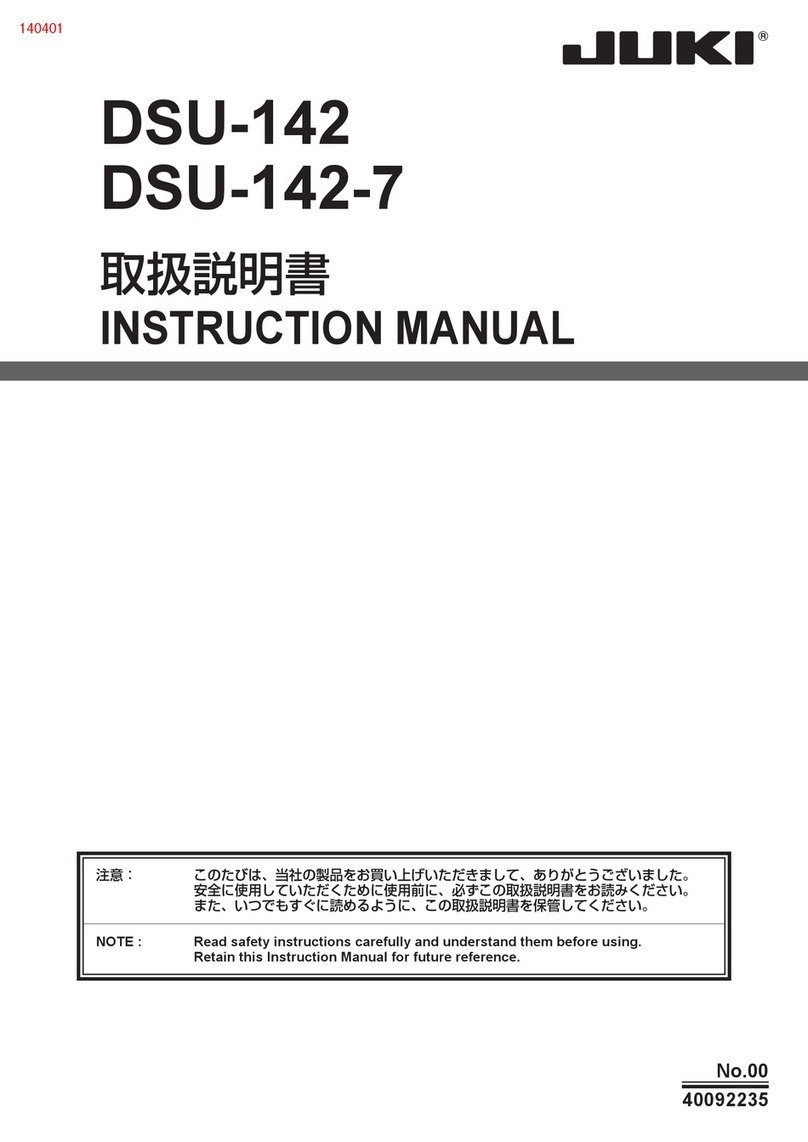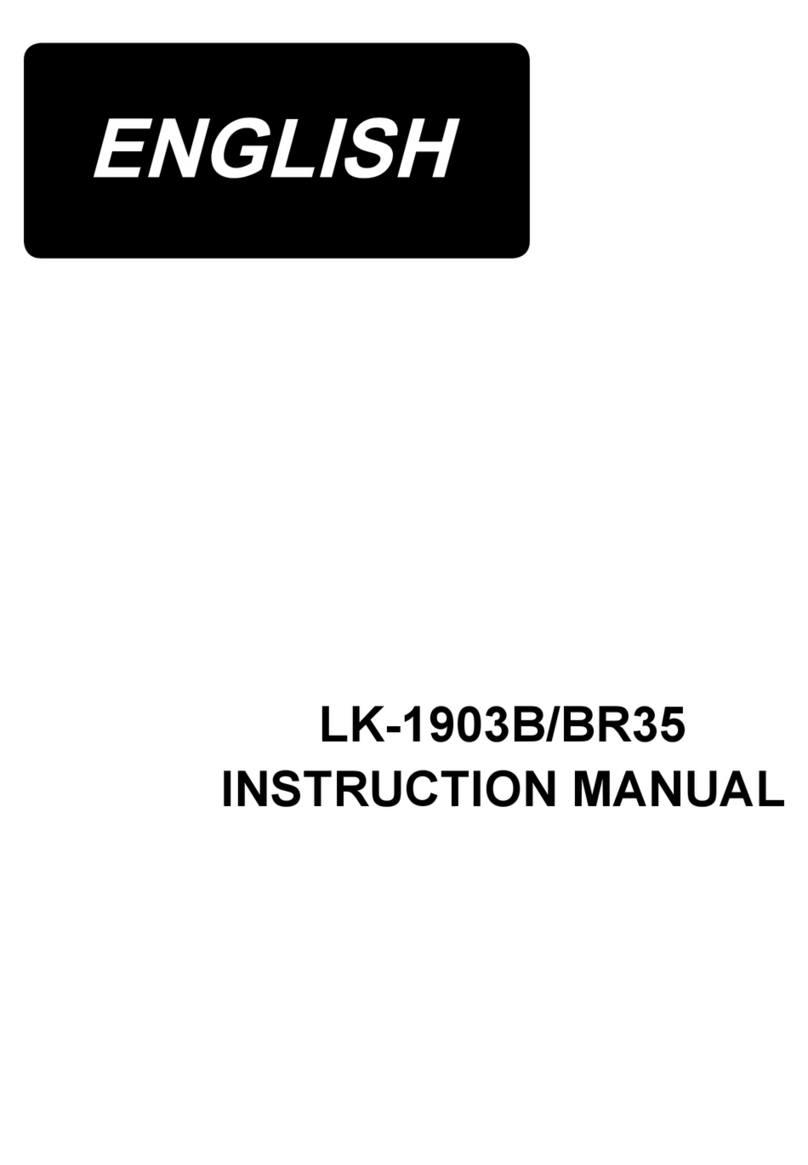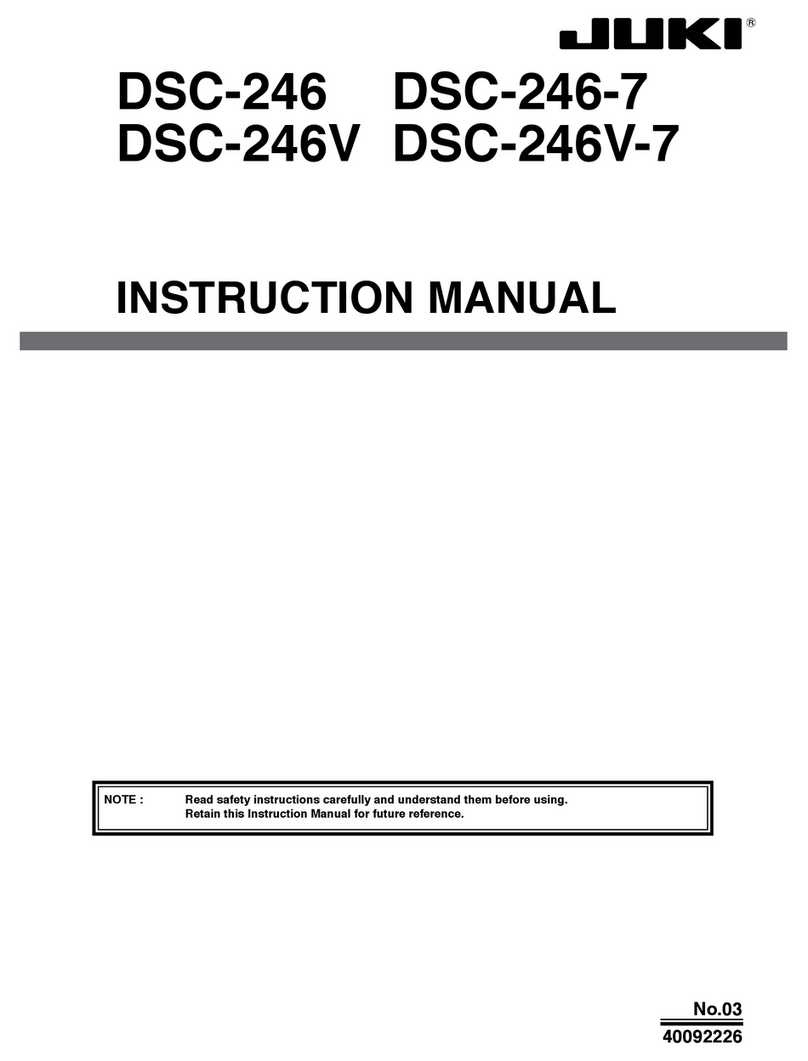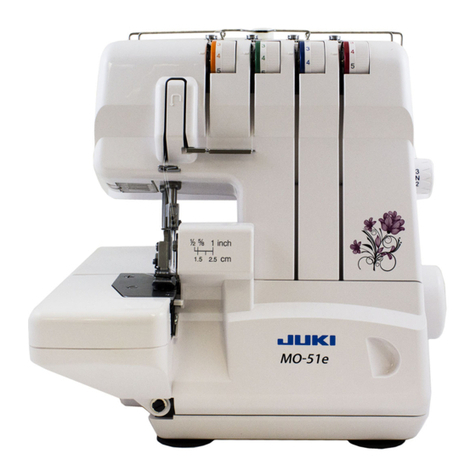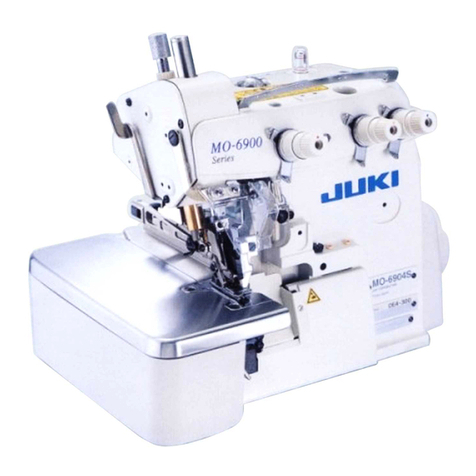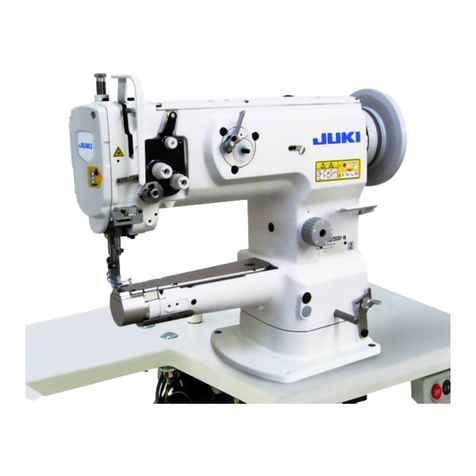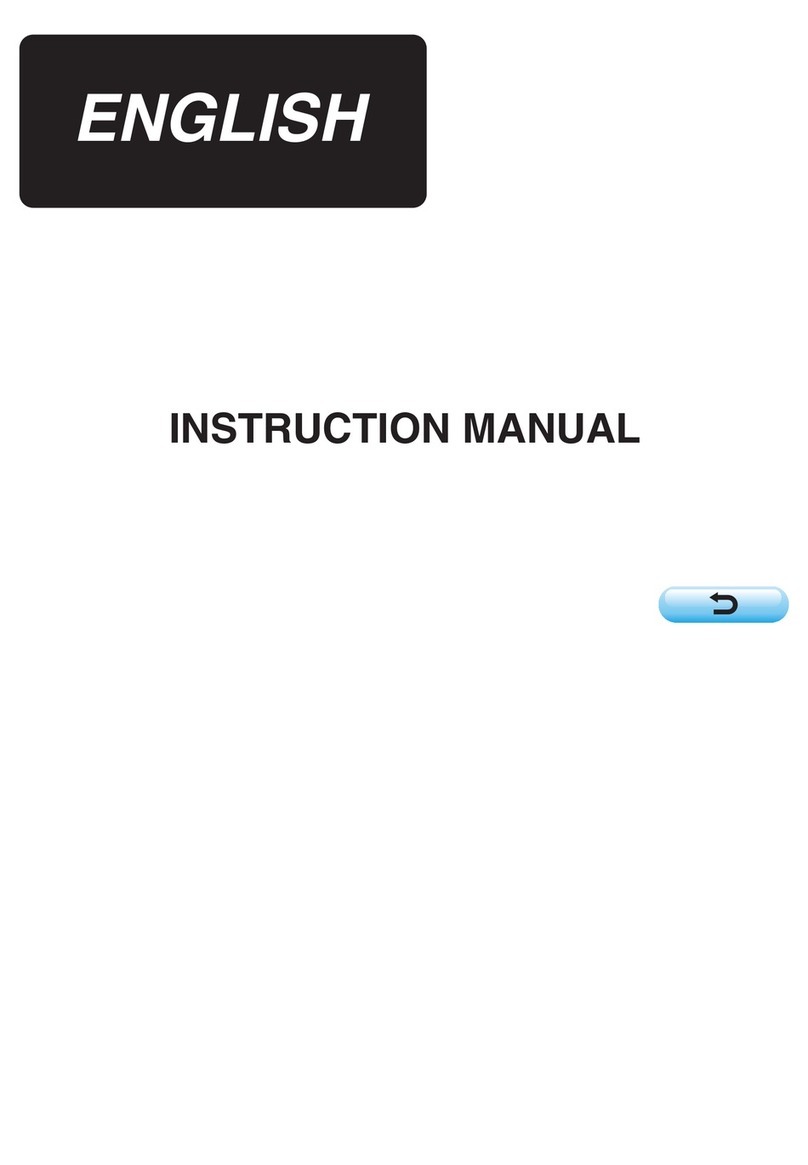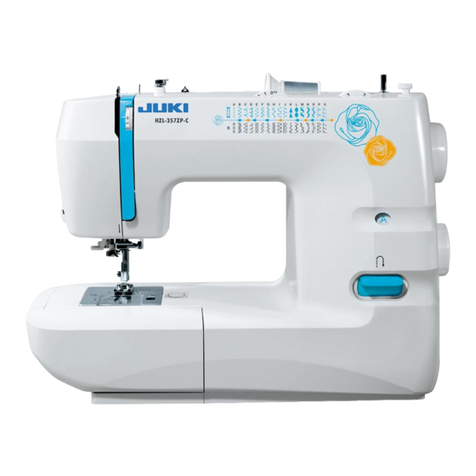
iii
iii
35(&$87,21672%(7$.(1,19$5,28623(5$7,2167$*(6
7UDQVSRUWDWLRQ
%HVXUHWROLIWDQGPRYHWKHPDFKLQHLQDVDIHPDQQHUWDNLQJWKHPDFKLQHZHLJKWLQFRQVLGHUDWLRQ5HIHU
WRWKHWH[WRIWKHLQVWUXFWLRQPDQXDOIRUWKHPDVVRIWKHPDFKLQH
%HVXUHWRWDNHVXI¿FLHQWVDIHW\PHDVXUHVWRSUHYHQWIDOOLQJRUGURSSLQJEHIRUHOLIWLQJRUPRYLQJWKH
PDFKLQHLQRUGHUWRSURWHFWDJDLQVWDFFLGHQWWKDWFDQUHVXOWLQSHUVRQDOLQMXU\RUGHDWK
2QFHWKHPDFKLQHKDVEHHQXQSDFNHGQHYHUUHSDFNLWIRUWUDQVSRUWDWLRQWRSURWHFWWKHPDFKLQHDJDLQVW
EUHDNDJHUHVXOWLQJIURPXQH[SHFWHGDFFLGHQWRUGURSSLQJ
8QSDFNLQJ
%HVXUHWRXQSDFNWKHPDFKLQHLQWKHSUHVFULEHGRUGHULQRUGHUWRSUHYHQWDFFLGHQWWKDWFDQUHVXOWLQ
SHUVRQDOLQMXU\RUGHDWK,QWKHFDVHWKHPDFKLQHLVFUDWHGLQSDUWLFXODUEHVXUHWRFDUHIXOO\FKHFNQDLOV
7KHQDLOVKDYHWREHUHPRYHG
%HVXUHWRFKHFNWKHPDFKLQHIRUWKHSRVLWLRQRILWVFHQWHURIJUDYLW\DQGWDNHLWRXWIURPWKHSDFNDJH
FDUHIXOO\LQRUGHUWRSUHYHQWDFFLGHQWWKDWFDQUHVXOWLQSHUVRQDOLQMXU\RUGHDWK
,QVWDOODWLRQ
(,7DEOHDQGWDEOHVWDQG
%HVXUHWRXVH-8.,JHQXLQHWDEOHDQGWDEOHVWDQGLQRUGHUWRSUHYHQWDFFLGHQWWKDWFDQUHVXOWLQSHU
VRQDOLQMXU\RUGHDWK,ILWLVLQHYLWDEOHWRXVHDWDEOHDQGWDEOHVWDQGZKLFKDUHQRW-8.,JHQXLQHRQHV
VHOHFWWKHWDEOHDQGWDEOHVWDQGZKLFKDUHDEOHWRVXSSRUWWKHPDFKLQHZHLJKWDQGUHDFWLRQIRUFHGXULQJ
RSHUDWLRQ
,IFDVWHUVDUH¿WWHGWRWKHWDEOHVWDQGEHVXUHWRXVHWKHFDVWHUVZLWKDORFNLQJPHFKDQLVPDQGORFN
WKHPWRVHFXUHWKHPDFKLQHGXULQJWKHRSHUDWLRQPDLQWHQDQFHLQVSHFWLRQDQGUHSDLULQRUGHUWRSUHYHQW
DFFLGHQWWKDWFDQUHVXOWLQSHUVRQDOLQMXU\RUGHDWK
,,&DEOHDQGZLULQJ
%HVXUHWRSUHYHQWDQH[WUDIRUFHIURPEHLQJDSSOLHGWRWKHFDEOHGXULQJWKHXVHLQRUGHUWRSUHYHQW
HOHFWULFDOVKRFNHDUWKOHDNDJHRU¿UHDFFLGHQW,QDGGLWLRQLILWLVQHFHVVDU\WRFDEOHQHDUWKHRSHUDWLQJ
VHFWLRQVXFKDVWKH9EHOWEHVXUHWRSURYLGHDVSDFHRIPPRUPRUHEHWZHHQWKHRSHUDWLQJVHFWLRQ
DQGWKHFDEOH
%HVXUHWRDYRLGVWDUEXUVWFRQQHFWLRQLQRUGHUWRSUHYHQWHOHFWULFDOVKRFNHDUWKOHDNDJHRU¿UHDFFLGHQW
%HVXUHWRVHFXUHO\FRQQHFWWKHFRQQHFWRUVLQRUGHUWRSUHYHQWHOHFWULFDOVKRFNHDUWKOHDNDJHRU¿UH
DFFLGHQW,QDGGLWLRQEHVXUHWRUHPRYHWKHFRQQHFWRUZKLOHKROGLQJLWVFRQQHFWRUVHFWLRQ
,,,*URXQGLQJ
%HVXUHWRKDYHDQHOHFWULFDOH[SHUWLQVWDOODQDSSURSULDWHSRZHUSOXJLQRUGHUWRSUHYHQWDFFLGHQWFDXVHG
E\HDUWKOHDNDJHRUGLHOHFWULFVWUHQJWKYROWDJHIDXOW,QDGGLWLRQEHVXUHWRFRQQHFWWKHSRZHUSOXJWRWKH
JURXQGHGRXWOHWZLWKRXWH[FHSWLRQV
%HVXUHWRJURXQGWKHHDUWKFDEOHLQRUGHUWRSUHYHQWDFFLGHQWFDXVHGE\HDUWKOHDNDJH
,90RWRU
%HVXUHWRXVHWKHVSHFL¿HGUDWHGPRWRU-8.,JHQXLQHSURGXFWLQRUGHUWRSUHYHQWDFFLGHQWFDXVHGE\
EXUQRXW
,IDFRPPHUFLDOO\DYDLODEOHFOXWFKPRWRULVXVHGZLWKWKHPDFKLQHEHVXUHWRVHOHFWRQHZLWKDQHQWDQ
JOHPHQWSUHYHQWLYHSXOOH\FRYHULQRUGHUWRSURWHFWDJDLQVWEHLQJHQWDQJOHGE\WKH9EHOW
%HIRUHRSHUDWLRQ
%HVXUHWRPDNHVXUHWKDWWKHFRQQHFWRUVDQGFDEOHVDUHIUHHIURPGDPDJHGURSRXWDQGORRVHQHVVEH
IRUHWXUQLQJWKHSRZHURQLQRUGHUWRSUHYHQWDFFLGHQWUHVXOWLQJLQSHUVRQDOLQMXU\RUGHDWK
1HYHUSXW\RXUKDQGLQWRWKHPRYLQJVHFWLRQVRIWKHPDFKLQHLQRUGHUWRSUHYHQWDFFLGHQWWKDWFDQUHVXOW
LQSHUVRQDOLQMXU\RUGHDWK
,QDGGLWLRQFKHFNWREHVXUHWKDWWKHGLUHFWLRQRIURWDWLRQRIWKHSXOOH\DJUHHVZLWKWKHDUURZVKRZQRQ
SXOOH\
,IWKHWDEOHVWDQGZLWKFDVWHUVLVXVHGEHVXUHWRVHFXUHWKHWDEOHVWDQGE\ORFNLQJWKHFDVWHUVRUZLWK
DGMXVWHUVLISURYLGHGLQRUGHUWRSURWHFWDJDLQVWDFFLGHQWFDXVHGE\DEUXSWVWDUWRIWKHPDFKLQH
'XULQJRSHUDWLRQ
%HVXUHQRWWRSXW\RXU¿QJHUVKDLURUFORWKLQJFORVHWRWKHPRYLQJVHFWLRQVVXFKDVWKHKDQGZKHHO
KDQGSXOOH\DQGPRWRURUSODFHVRPHWKLQJQHDUWKRVHVHFWLRQVZKLOHWKHPDFKLQHLVLQRSHUDWLRQLQRUGHU
WRSUHYHQWDFFLGHQWFDXVHGE\HQWDQJOHPHQWWKDWFDQUHVXOWLQSHUVRQDOLQMXU\RUGHDWK
%HVXUHQRWWRSODFH\RXU¿QJHUVQHDUWKHVXUURXQGDUHDRIWKHQHHGOHRULQVLGHWKHWKUHDGWDNHXSOHYHU
FRYHUZKHQWXUQLQJWKHSRZHURQRUZKLOHWKHPDFKLQHLVLQRSHUDWLRQLQRUGHUWRSUHYHQWDFFLGHQWWKDW
FDQUHVXOWLQSHUVRQDOLQMXU\RUGHDWK
7KHPDFKLQHUXQVDWDKLJKVSHHG1HYHUEULQJ\RXUKDQGVQHDUWKHPRYLQJVHFWLRQVVXFKDVORRSHU
VSUHDGHUQHHGOHEDUKRRNDQGFORWKWULPPLQJNQLIHGXULQJRSHUDWLRQLQRUGHUWRSURWHFW\RXUKDQGV
DJDLQVWLQMXU\,QDGGLWLRQEHVXUHWRWXUQWKHSRZHURIIDQGFKHFNWREHVXUHWKDWWKHPDFKLQHFRPSOHWH
O\VWRSVEHIRUHFKDQJLQJWKHWKUHDG
%HFDUHIXOQRWWRDOORZ\RXU¿QJHUVRUDQ\RWKHUSDUWVRI\RXUERG\WREHFDXJKWEHWZHHQWKHPDFKLQH
DQGWDEOHZKHQUHPRYLQJWKHPDFKLQHIURPRUUHSODFLQJLWRQWKHWDEOHLQRUGHUWRSUHYHQWDFFLGHQWWKDW
FDQUHVXOWLQSHUVRQDOLQMXU\RUGHDWK
– 13 –
24. ADJUSTING THE FORE & AFT POSITION OF NEEDLE BAR ROCKER
FRAME
WARNING :
To protect against possible personal injury due to abrupt start of the machine, be sure to start the following
work after turning the power off and ascertaining that the motor is at rest.
25. MOTOR PULLEY AND SEWING SPEED
Model Sewing speed
Effective
diameter of
handwheel
Number
of poles of
motor
Frequency
Number of
revolution of
motor
Effective diameter
of motor pulley
LG-158
LG-158-1 1,500 sti/min φ108.5 2
50Hz 2,865 rpm φ55
60Hz 3,430 rpm φ45
1) Use a 3-phase 400 W AC clutch motor.
2) Use an M type V-belt.
3) The relation among the motor pulley, the sewing speed of sewing machine is as shown in the table below:
(Caution) The effective diameter of motor pulley is obtained by subtracting 5 mm from its outside diameter.
The correct distance between the walking foot bar ❶and the presser bar ❷is
17 mm (43/64”) at the place shown in the figure when the stitch length is “0”.
1. Set the stitch length to “0”.
2. Loosen the needle bar driving crank clamp screw ❸.
3. Then, by making the clearance between the walking bar and the presser bar
to 17 mm (43/64”), tighten the screw ❸.
Adjust the relationship between the needle and the feed dog needle hole
as follows:
1. Set the stitch length to “0”.
2. Loosen the clamp screw ❹of the feed rock shaft crank.
3. Then, by bringing the needle to about the center or nearer to front from the
center of the needle hole of feed dog, tighten the feed rock shaft crank clamp
screw.
❶❷
❸❹

